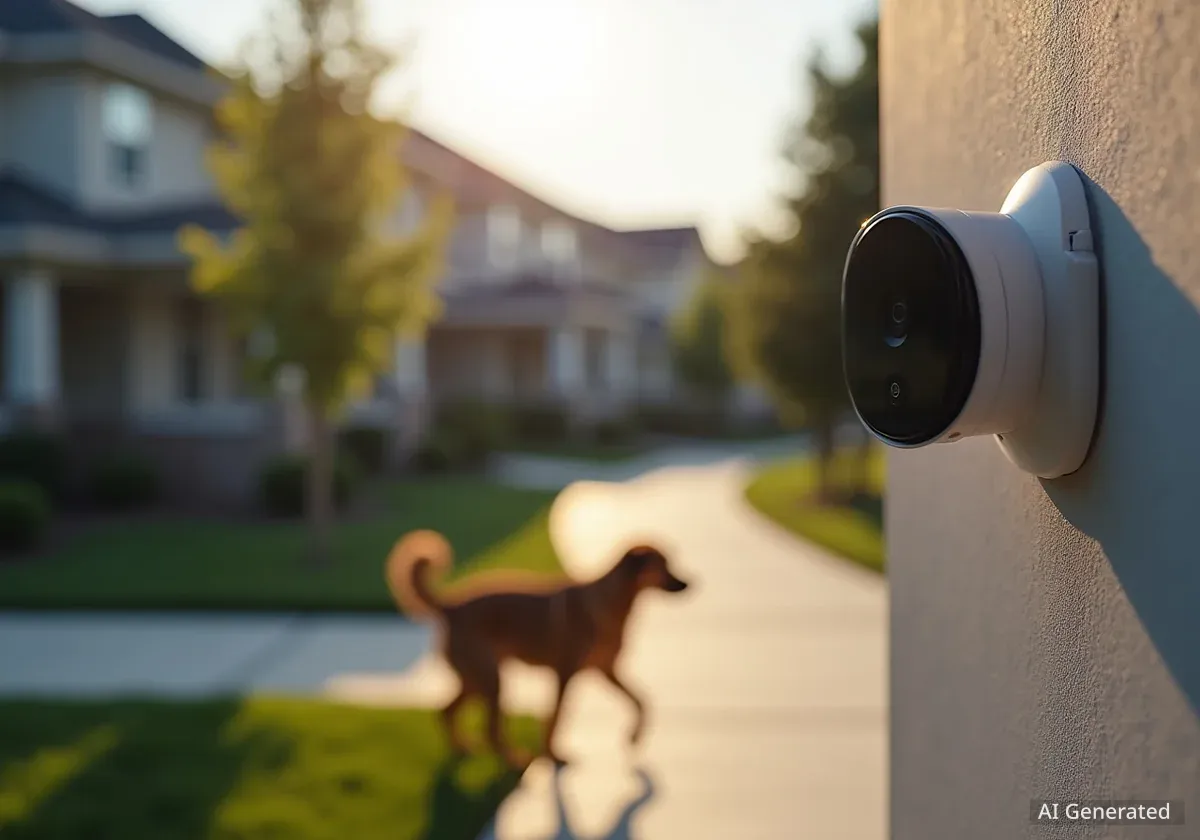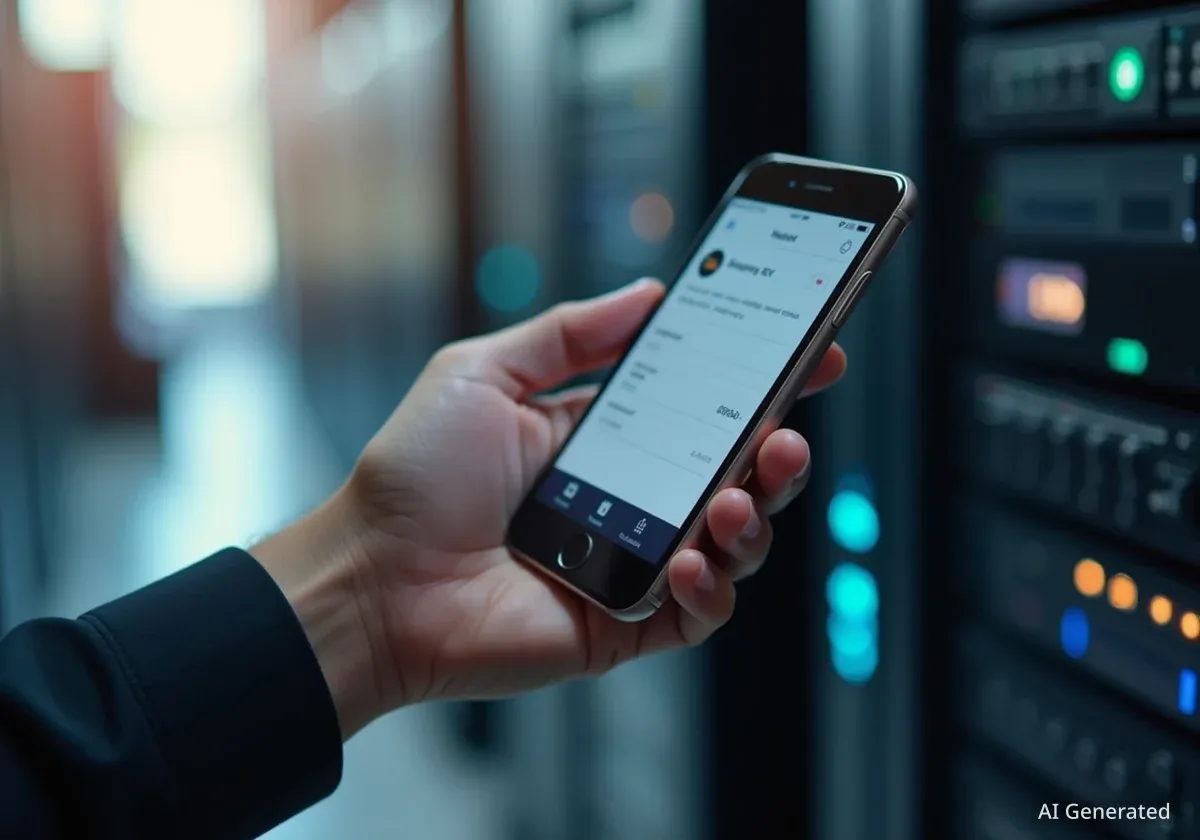Amazon has introduced "Search Party," a new artificial intelligence feature for its Ring camera network designed to help locate lost pets. The system uses image recognition to identify dogs that match a missing pet's description, but its launch has renewed discussions about the expanding capabilities of private surveillance networks and their potential applications beyond finding animals.
Key Takeaways
- Amazon's new "Search Party" feature uses the Ring camera network and AI to help find lost dogs.
- The system allows users to alert neighbors and uses image recognition to scan video feeds for potential matches.
- While initially for dogs, with cat support planned, the technology raises questions about future use for human identification.
- The feature highlights the growing power of private surveillance networks, with Ring having partnerships with over 3,400 U.S. law enforcement agencies.
A New Tool for Pet Owners
Amazon unveiled the "Search Party" feature at its annual hardware event, presenting it as a community-oriented tool. The process is designed to be straightforward for Ring camera owners. When a dog goes missing, its owner can create an alert within the Ring system.
This alert activates the AI, which then analyzes video footage from participating Ring cameras in the neighborhood. If a camera detects a dog that visually matches the description of the missing pet, it notifies the camera's owner. That individual can then review the footage and, if it is a match, contact the pet's owner to facilitate a reunion.
According to a company press release, the goal is to use AI to transform devices into tools that help "neighbors to look out for each other, and create safer, more connected communities." The service will initially support dogs, with plans to include cats in a future update.
Background on Ring's Network
Amazon acquired Ring in 2018, and it has since become one of the most widespread private surveillance systems in the United States. The network consists of millions of interconnected video doorbells and security cameras installed at private residences, providing a vast web of real-time monitoring in neighborhoods across the country.
The Intersection of AI and Surveillance
The introduction of Search Party marks a significant step in the application of AI to Ring's massive video dataset. The system's ability to scan countless hours of footage for a specific visual match demonstrates a powerful new capability. While the current focus is on pets, the underlying technology has prompted questions about its potential future applications.
In a statement, an Amazon spokeswoman clarified the feature's design. She said, "Search Party was designed to match images of dogs to dogs captured in Ring videos. It is not designed to process human biometrics."
However, the technology's potential has not gone unnoticed. Ring already offers facial recognition that can differentiate between known individuals, like a family member, and a stranger at the door. The system can also create daily summaries of activity, such as confirming if a package was delivered or when a specific person left the house.
Data Sharing and Law Enforcement Partnerships
A key part of the broader discussion around Ring involves its relationships with government agencies. Amazon has established partnerships with more than 3,400 police forces, fire departments, and other public agencies. These partnerships have historically facilitated law enforcement requests for video footage from Ring users to assist in investigations.
In 2024, Amazon made changes to the process, ending a feature that allowed police to directly request footage from users through its Neighbors app. Now, law enforcement must use formal legal procedures, like a warrant or subpoena, to obtain footage directly from Ring. However, the extensive network of partnerships remains in place.
Expanding Surveillance Capabilities
The use of AI to analyze vast amounts of data from private sources is a growing trend. Police departments have begun to obtain camera data from self-driving cars that were near a crime scene. This practice, known as lateral surveillance, involves public-private partnerships that open new channels for data collection and analysis that were not previously possible.
The Broader Implications of AI Monitoring
The debate over features like Search Party centers on the balance between convenience and privacy. Many users value Ring for the sense of security and convenience it provides, from monitoring package deliveries to checking on their property while away. A feature that could help find a lost pet—or, hypothetically, a missing child—is a compelling use case that many find difficult to oppose.
However, critics express concern about the creation of a pervasive, privately-owned surveillance infrastructure with advanced analytical capabilities. The ability for AI to monitor and analyze video on a massive scale fundamentally changes the nature of surveillance. Previously, the sheer volume of video footage made comprehensive monitoring impractical.
"Citizens will be on their best behavior because we are constantly recording and reporting everything that’s going on."
This sentiment captures the core of the privacy concerns: that constant, AI-powered monitoring could have a chilling effect on public life. As technology companies like Amazon and Google, which is integrating its Gemini AI into Nest products, continue to innovate, the discussion about establishing clear boundaries for data use and surveillance is expected to intensify.
For now, Search Party is focused on reuniting families with their lost pets. But its launch serves as a clear indicator of the direction in which smart home technology is headed—one where artificial intelligence can see, analyze, and act on the world around it in increasingly sophisticated ways.





